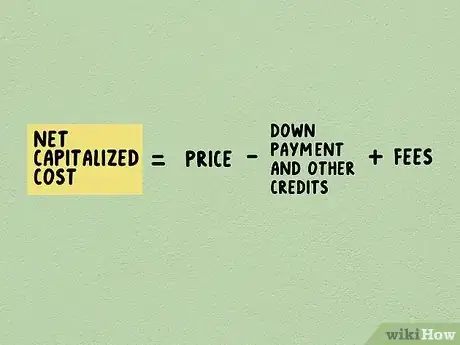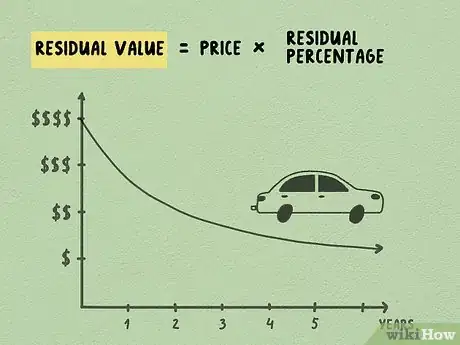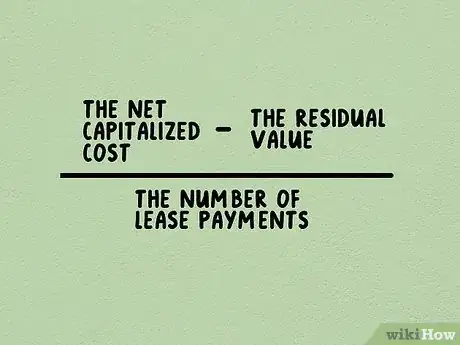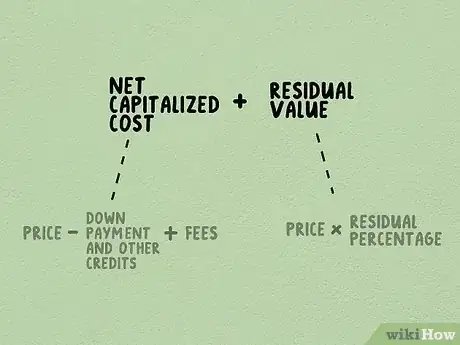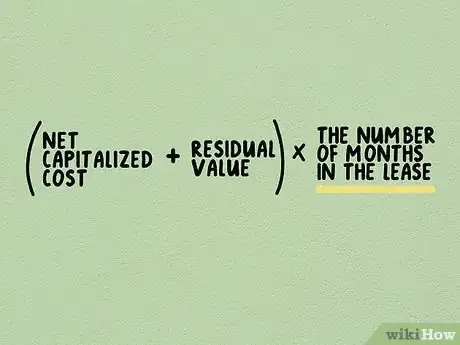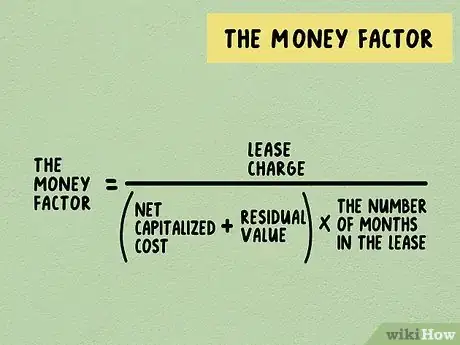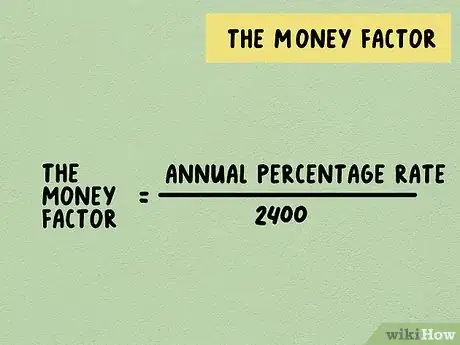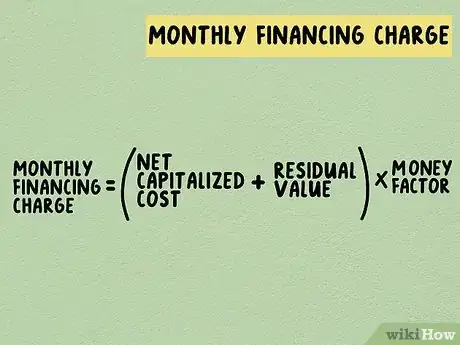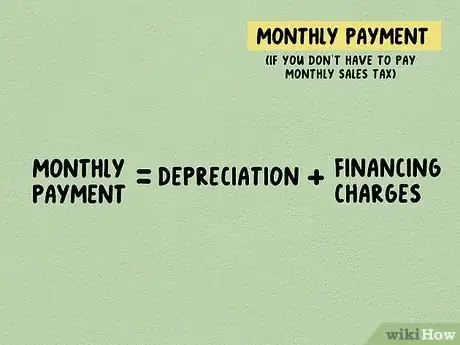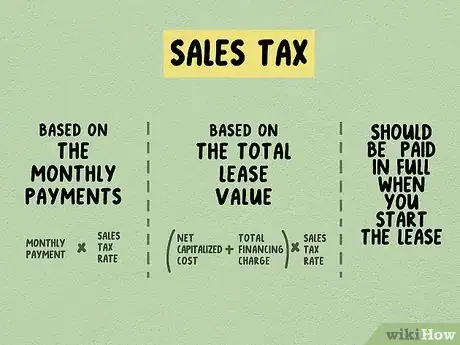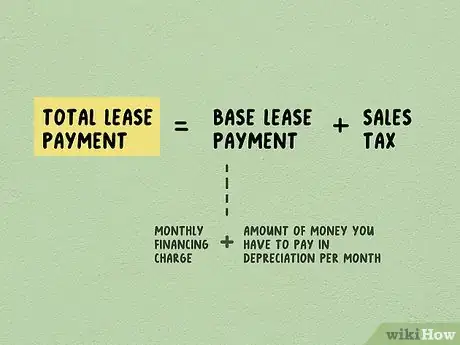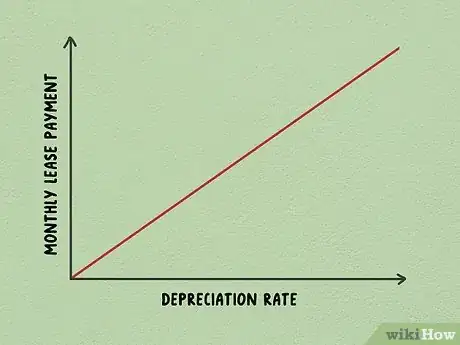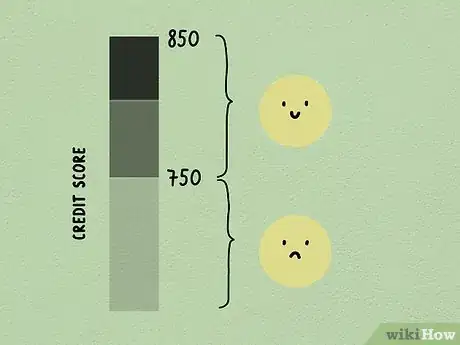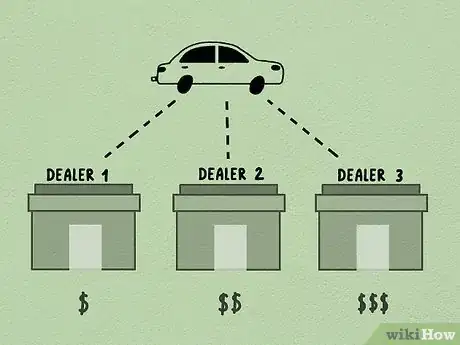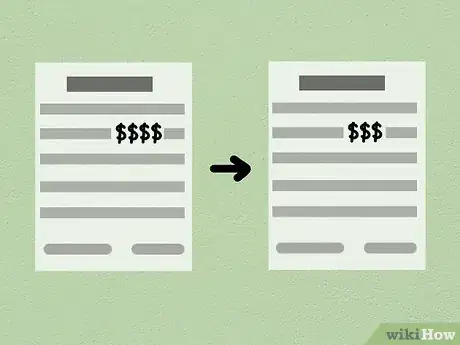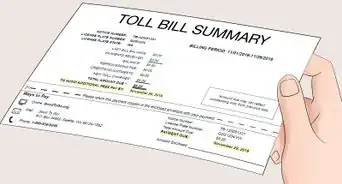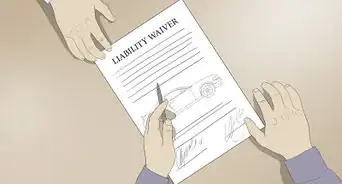This article was co-authored by Ara Oghoorian, CPA and by wikiHow staff writer, Jennifer Mueller, JD. Ara Oghoorian is a Certified Financial Accountant (CFA), Certified Financial Planner (CFP), a Certified Public Accountant (CPA), and the Founder of ACap Advisors & Accountants, a boutique wealth management and full-service accounting firm based in Los Angeles, California. With over 26 years of experience in the financial industry, Ara founded ACap Asset Management in 2009. He has previously worked with the Federal Reserve Bank of San Francisco, the U.S. Department of the Treasury, and the Ministry of Finance and Economy in the Republic of Armenia. Ara has a BS in Accounting and Finance from San Francisco State University, is a Commissioned Bank Examiner through the Federal Reserve Board of Governors, holds the Chartered Financial Analyst designation, is a Certified Financial Planner™ practitioner, has a Certified Public Accountant license, is an Enrolled Agent, and holds the Series 65 license.
There are 8 references cited in this article, which can be found at the bottom of the page.
wikiHow marks an article as reader-approved once it receives enough positive feedback. In this case, several readers have written to tell us that this article was helpful to them, earning it our reader-approved status.
This article has been viewed 484,582 times.
The typical monthly lease payment has 2 basic components: depreciation and financing fees. To find the depreciation, subtract the amount the car will be worth at the end of the lease from the current sticker price. Then, subtract that amount from the sales price you negotiated to find out how much you'll be paying in depreciation. Multiplying depreciation by the interest rate gets you the total lease payment before sales tax. If you're paying monthly sales tax, you'll multiply that amount by the applicable sales tax rate to get your total lease payment. All of these calculations can seem a bit confusing, but once you break it down, you can avoid being overcharged on your lease.[1]
Steps
Determining Depreciation Cost
-
1Subtract your down payment and other credits from the price of the car. Anything you're paying upfront, such as a down payment or the value of a trade-in, comes off the negotiated selling price of the car. Then, you would add any fees or other amounts, such as a previous car loan the dealer has agreed to pay. This amount is referred to as "net capitalized cost."[2]
- For example, suppose you want to lease a car with a $30,000 sticker price that you've negotiated down to $26,000. You have a down payment of $1,000 and a trade-in worth $3,000. Your net capitalized cost would be $22,000.
- If you also owed $5,000 on your current car that the dealer agreed to pay off, you would add that back to the cost, giving you a net capitalized cost of $27,000 instead of $22,000. Note, however, that $27,000 is still less than the $30,000 sticker price for the car.
-
2Reduce the net capitalized cost by the car's residual value. The net capitalized cost is what you would pay for the car if you were buying it outright. However, you're leasing, not buying, at this point. When your lease ends, the car will still have value to the dealer, known as the "residual value." Subtracting the residual value from the net capitalized cost tells you how much you'll pay in depreciation over the course of the lease.[3]
- For example, if you lease a car with a net capitalized cost of $22,000 that has a residual value of $16,500, you'd be paying $5,500 in depreciation over the course of the lease.
- The dealer may give you a percentage rather than a specific dollar figure. In that case, you would multiply the sticker price of the car by the percentage to find the residual value. For example, a car with a $30,000 sticker price and a 55% residual percentage would have $16,500 in residual value.
- Depreciation isn't a straight line. Typically, a car depreciates the most in the first year, and then more over the course of the first 5 years. Most cars lose around 60% of their value in their first 5 years.[4]
Advertisement -
3Divide the total depreciation cost by the number of monthly lease payments. To find out how much you're going to pay in depreciation each month, take the number you got when you subtracted the residual value from the net capitalized cost and divide it by the number of lease payments. Keep in mind this is only one of 3 parts of the total lease payment, although it's usually the largest part of your lease payment.[5]
- For example, suppose you're leasing a car for 3 years, or 36 months. The car has a sticker price of $30,000 and a residual value of $16,500. You negotiated the sticker price down to $26,000 and applied $4,000 in payments and credits, leaving a net capitalized cost of $22,000. Over the course of the lease, you'll pay $5,500 in depreciation, or $152.78 a month.
Computing the Finance Charges
-
1Add the net capitalized cost and the residual value. The net capitalized cost is the negotiated sales price of the car, minus your down payment and any other credits, plus any previous loan balance the dealer has agreed to pay. The residual value of the car is the amount the car will be worth at the end of the lease. Financing is based on a percentage of the total of these 2 values.[6]
- For example, suppose you're leasing a car with a negotiated sales price of $26,000. You have a $1,000 down payment and a trade-in worth $3,000. Subtracting those 2 credits from the sales price gives you a net capitalized cost of $22,000. The car has a residual value of $16,500. When you add the net capitalized cost of $22,000 and the residual value of $16,500, you get $38,500.
-
2Multiply by the number of months in the lease. Start with the amount you got when you added the net capitalized cost and the residual value. When you multiply that number by the number of months in the lease, you'll get a really large number — but don't let that scare you. This is just a working step.[7]
- For example, suppose you're leasing a car for 36 months with a net capitalized cost of $22,000 and a residual value of $16,500. Adding net capitalized cost and residual value gets you $38,500. When you multiply $38,500 by 36, you get 1,386,000.
-
3Use the large number to find the "money factor" with a lease charge. If you have a "lease charge" (sometimes also called a "rent charge") in your lease agreement, it tells you the total amount you'll pay in financing over the term of the lease. Divide that number by the number you got when you multiplied the sum of the net capitalized cost and the residual value by the number of months in the lease. The result is the "money factor," which determines your monthly financing charge.[8]
- For example, you're leasing a car for 36 months. The net capitalized cost is $22,000 and the residual value is $16,500, for a total of $38,500. That number multiplied by 36 is 1,386,000. The lease contract specifies a lease charge of $3,465. When you divide 3,465 by 1,386,000, you get 0.0025. That's your "money factor."
-
4Divide the interest rate by 2,400 to find the money factor. If you're given an annual percentage rate (APR) by the dealer instead of a total lease fee, you still use the "money factor" to find out how much you'll pay for financing each month. However, the math is a little simpler than it is if you have a total lease charge.[9]
- For example, suppose you're leasing a car at 6% APR. Drop the percentage sign and simply divide 6 by 2,400. The result is 0.0025, which is your money factor.
-
5Multiply the total of the net capitalized cost and the residual value by the money factor. Go back to the number you got when you added the net capitalized cost and residual value of the car. When you multiply that amount by the money factor, you find out what your monthly financing charge will be.[10]
- For example, suppose you're leasing a car with a net capitalized cost of $22,000 and a residual value of $16,500, for a total of $38,500. The money factor for the lease is 0.0025. When you multiply $38,500 by 0.0025, you get $96.25. This is the amount you'll pay in financing for each month of the lease.
Figuring out the Total Lease Payment
-
1Combine depreciation and financing to get your base monthly payment. Depreciation and financing charges are the basic components of a car lease. If you live in an area where you don't have to pay monthly sales tax, this amount will be your actual monthly payment.[11]
- For example, if you have a monthly depreciation fee of $152.78 and a monthly financing fee of $96.25, your base monthly lease payment would be $249.03.
-
2Calculate any monthly sales tax. Canada and most US states impose sales tax on car leases, typically expressed as a percentage. Depending on where you live, you may be taxed on the total value of the lease or simply on your lease payments.
- If you're taxed only on the monthly payments, take your base monthly payment and multiply it by the sales tax rate. For example, suppose you have to pay a 7% sales tax and your monthly payments are $249.03. If you convert 7% to a decimal (0.07), then multiply $249.03 by 0.07, you get a monthly tax payment of $17.43.
- Some areas tax based on the total lease value. In that case, you would add the net capitalized cost of the lease with the total financing charge, then multiply by the sales tax. For example, a lease with a net capitalized cost of $22,000 and a financing charge of $3,465 would have a total lease value of $25,465. With a 7% sales tax, this would mean sales taxes of $1,782.55 for the total lease (25,465 x 0.07), or $49.52 a month on a 36-month lease (1,782.55/36).[12]
- Some states require sales tax to be collected in full when you start the lease. Even though sales tax in those states doesn't impact your monthly payments, it's still a good idea to know how it's calculated.
-
3Add the monthly sales tax to your base lease payment. If you're paying monthly sales tax, take the amount you calculated and add it to the base lease payment. This amount is your total lease payment for the car.
- For example, suppose your base monthly lease payment is $249.03 and you're paying 7% sales tax on that amount, or $17.43 a month. This would make your actual lease payment $266.46 a month.
Negotiating the Best Lease Payment
-
1Choose a vehicle with a lower depreciation rate. Depreciation fees make up a large portion of your monthly lease payment, so it makes sense that if you lease a car with a lower depreciation rate, you'll have a lower monthly lease payment. If you're shopping for a lease, focus on how much the car will depreciate over the term of the lease rather than the car's sticker price.[13]
- You can often get a lower lease payment if you lease a used car, particularly one coming out of its first lease. Remember that cars depreciate more in their first year — the lower depreciation rate on an older car could translate into a lower overall lease payment.[14]
-
2Check your credit score before you start shopping for a lease. You'll have more bargaining power if your credit score, particularly when it comes to negotiating the finance rate. The best rates are only available to "well qualified" customers who have scores that are at least in the mid- to high- 700s. Use a free online service or mobile app, such as Credit Karma or WalletHub, to check your credit score.[15]
- If you have poor credit, you may not be able to get a lease at all. If you do qualify for a lease, expect the interest rate to be as high as 15%. If you have strong credit, on the other hand, you may be able to get a rate as low as 2%.
-
3Compare dealership offers. Different dealers may offer the same car at different prices or have different financing deals. Once you've decided on a make and model of vehicle, shop around and compare lease offers from at least 3 dealers if possible.[16]
- If you have a car to trade-in, get an offer on both the price of the vehicle and the trade-in value at the same time. Otherwise, a dealer might quote you a low sale price on the vehicle, then take that amount out on what they would've otherwise given you on the trade-in.
-
4Propose more favorable pricing and terms for the lease. Even if you're not fond of doing so, you're probably familiar with negotiating the price of a car you want to buy. The same goes for leases. Armed with comparison quotes from other dealers, start negotiations by telling a dealer the terms or monthly price that you prefer for the car.[17]
- Dealers often have special offers, especially when they want to reduce their inventory, such as when new models arrive in September. Use this to your advantage to haggle the dealer down on the price. Remember — the lower the sale price, the lower your net capitalized cost, which in turn lowers your monthly lease payment.
Expert Q&A
Did you know you can get expert answers for this article?
Unlock expert answers by supporting wikiHow
-
QuestionHow much should my monthly lease payments be?
 Ara Oghoorian, CPAAra Oghoorian is a Certified Financial Accountant (CFA), Certified Financial Planner (CFP), a Certified Public Accountant (CPA), and the Founder of ACap Advisors & Accountants, a boutique wealth management and full-service accounting firm based in Los Angeles, California. With over 26 years of experience in the financial industry, Ara founded ACap Asset Management in 2009. He has previously worked with the Federal Reserve Bank of San Francisco, the U.S. Department of the Treasury, and the Ministry of Finance and Economy in the Republic of Armenia. Ara has a BS in Accounting and Finance from San Francisco State University, is a Commissioned Bank Examiner through the Federal Reserve Board of Governors, holds the Chartered Financial Analyst designation, is a Certified Financial Planner™ practitioner, has a Certified Public Accountant license, is an Enrolled Agent, and holds the Series 65 license.
Ara Oghoorian, CPAAra Oghoorian is a Certified Financial Accountant (CFA), Certified Financial Planner (CFP), a Certified Public Accountant (CPA), and the Founder of ACap Advisors & Accountants, a boutique wealth management and full-service accounting firm based in Los Angeles, California. With over 26 years of experience in the financial industry, Ara founded ACap Asset Management in 2009. He has previously worked with the Federal Reserve Bank of San Francisco, the U.S. Department of the Treasury, and the Ministry of Finance and Economy in the Republic of Armenia. Ara has a BS in Accounting and Finance from San Francisco State University, is a Commissioned Bank Examiner through the Federal Reserve Board of Governors, holds the Chartered Financial Analyst designation, is a Certified Financial Planner™ practitioner, has a Certified Public Accountant license, is an Enrolled Agent, and holds the Series 65 license.
Certified Public Accountant
Warnings
- This article discusses how to calculate a lease payment in the US and Canada. If you live in another country, auto leases might be calculated differently. Ask the car dealer to break down their calculations for you so that you understand your lease payment.⧼thumbs_response⧽
References
- ↑ http://www.thecarleaseguide.com/how-to-calculate-a-car-lease-payment/
- ↑ https://www.edmunds.com/car-leasing/calculate-your-own-lease-payment.html
- ↑ https://www.federalreserve.gov/pubs/leasing/resource/different/future.htm
- ↑ http://www.kbb.com/what-is/car-depreciation/
- ↑ https://www.edmunds.com/car-leasing/calculate-your-own-lease-payment.html
- ↑ https://youtu.be/WTIEdt4LZJ4?t=139
- ↑ https://youtu.be/WTIEdt4LZJ4?t=139
- ↑ https://youtu.be/WTIEdt4LZJ4?t=139
- ↑ https://www.nerdwallet.com/blog/loans/auto-loans/nerdwallet-lease-calculator/
- ↑ https://www.ag.state.mn.us/Consumer/Handbooks/Cars/CH07.asp
- ↑ https://www.ag.state.mn.us/Consumer/Handbooks/Cars/CH07.asp
- ↑ https://www.revenue.state.mn.us/guide/leases
- ↑ https://www.ag.state.mn.us/Consumer/Handbooks/Cars/CH07.asp
- ↑ http://www.kbb.com/what-is/car-depreciation/
- ↑ https://www.nerdwallet.com/blog/loans/auto-loans/nerdwallet-lease-calculator/
- ↑ https://www.nerdwallet.com/blog/loans/auto-loans/nerdwallet-lease-calculator/
- ↑ https://www.nerdwallet.com/blog/loans/auto-loans/nerdwallet-lease-calculator/
About This Article
To calculate a lease payment, start by calculating the net capitalized cost, which is the negotiated selling price minus any down payment or other credits, like a trade-in. Next, determine the residual value of the car at the end of the lease by multiplying the sticker price of the car by the percentage to find the residual value. Subtract the residual value from the net capitalized cost, and divide the resulting number by the number of payments you will have to make to get the depreciation part of your monthly payment. To learn how to add the sales tax and calculate the final lease payment, read on!
